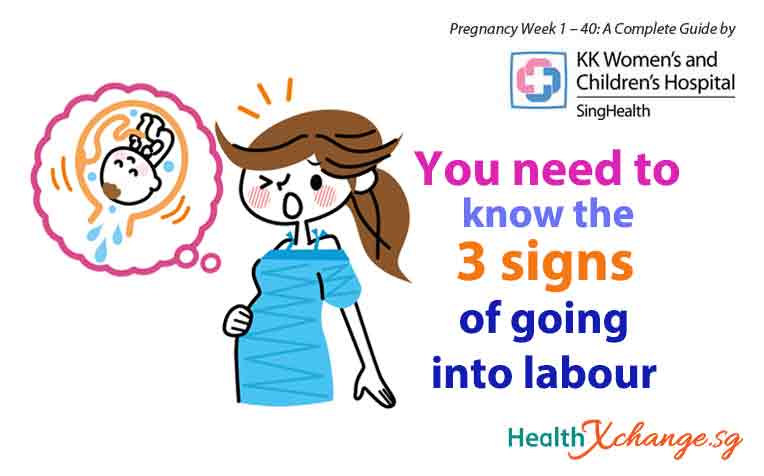
Pregnancy week 31: you will need to identify the three signs of going into labour so as to know when to go to the hospital. The key thing is to stay calm when it happens.
For mom
Increased number of doctor visits in the third trimester
This trimester you would probably find yourself visiting your obstetrician more frequently. From weeks 32-36, the frequency of doctor visits becomes fortnightly and after week 36, weekly. Those who are carrying high-risk pregnancies would require more frequent checks while those who are carrying more stable pregnancies may be asked to return to the clinic less often.
3 Signs of going into labour
Usually before going into labour, there are some signs to take note of:
- Water bag breaking - typically experienced as a "gush of fluid" (It is usually not as dramatic as on television) but it does cause your underwear to be soaked and sometimes causes leaking down the leg.
- A “bloody” show - which is a mucous type of vaginal discharge which may be pink in colour.
- Regular contractions - getting closer together and stronger in intensity. You may feel the urge to "bear down". An example of when to head to the hospital is when the interval between contractions is 5-10 minutes and each lasts an average of 10-15 seconds.
When to go to the hospital?
Take note of the duration of your contractions and how many minutes apart each one is. If you have any of the above labour signs, you can come directly to the hospital.
Bear in mind that the most important thing to do when this happens, is to stay calm, and everything will fall into place naturally.
For baby
How is baby monitored during active labour?
1. Cardiotography (CTG) for heart rate
Upon arrival at the delivery suite, you will find 2 transducers being strapped to your belly - to monitor your contractions and baby's heart rate. This is called continuous cardiotography or CTG for short. One transducer measures your contractions while the other monitors your baby.
In active labour, strong contractions may impair the supply of blood and oxygen to your baby. Tracings produced by this technique will help your treating team monitor your baby's wellbeing.
2. Colour of amniotic fluid can tell you how baby is doing
Another clue to tell the team how well your baby is doing would be the colour of the leaking amniotic fluid, which will be monitored throughout labour.
A light pink stained liquor or clear liquor is normal.
Thick dark brownish green coloured liquor would be something most hope not to see. This meconium stained liquid means that your baby has released poo inside and the danger is in it breathing it in, causing a lung reaction.
Some other colours which spell danger are heavy blood stained liquor. It would mean that there is an internal bleed or that the placenta is separating early from the uterus and your baby's oxygen supply is therefore being reduced. In these cases, emergency deliveries are usually required.
Ref: L20
Click the link for the complete listing of articles for Pregnancy Week 1 - Week 40.
Contributed by















 Get it on Google Play
Get it on Google Play